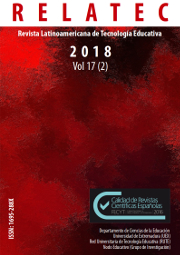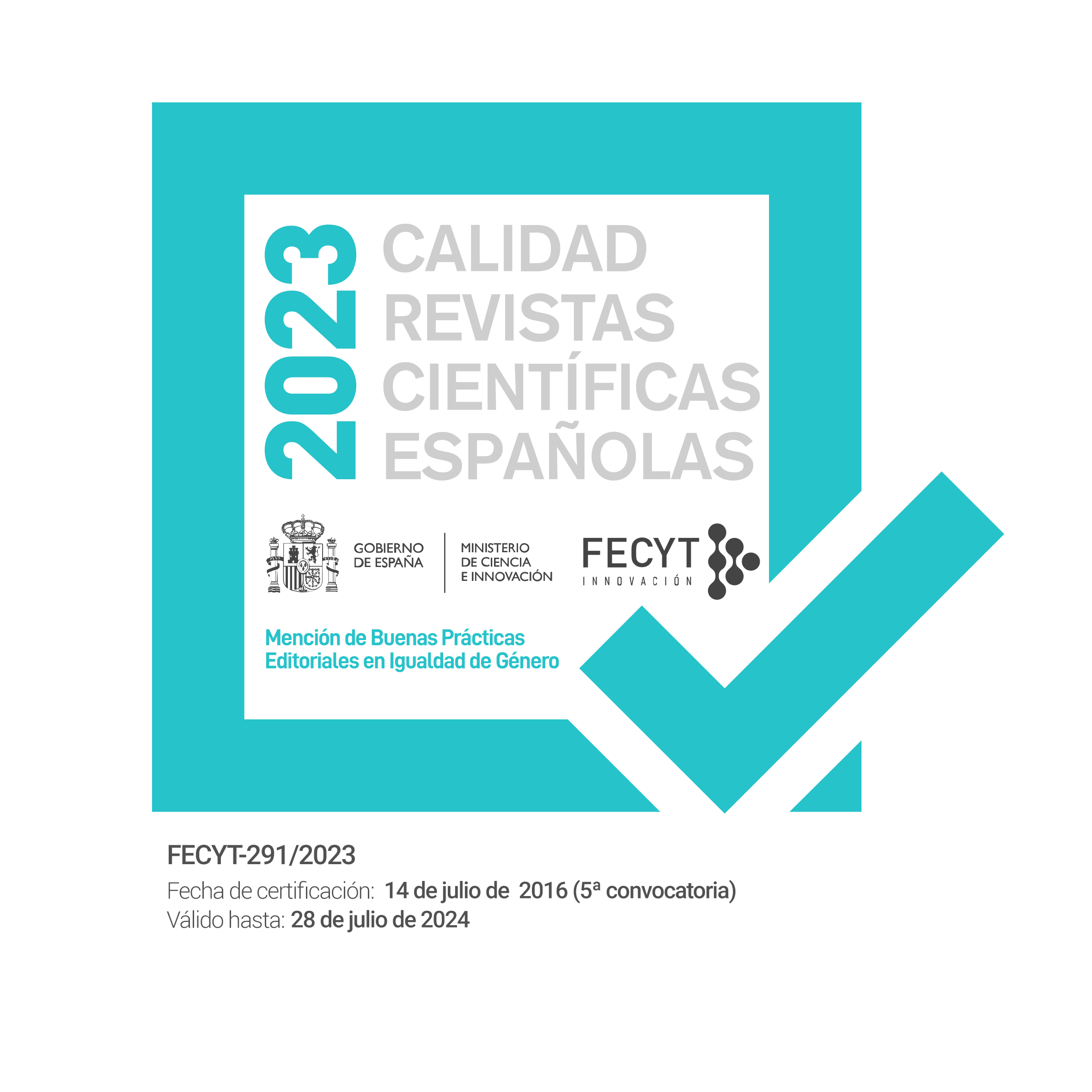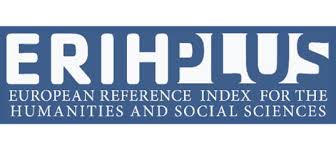Longitudinal Analysis of Academic Performance of Higher Education Students in Autonomous Learning Environments
DOI:
https://doi.org/10.17398/1695-288X.17.2.101Keywords:
E-Learning, Social Presence, Self Management Learning, Higher EducationAbstract
E-learning implies the self-management of learning. When the virtual environment demands a high level of autonomy, it is possible to do without a teacher because the techno-educational resources are self-operated to promote learning conditions. Under these conditions, the absence of a teacher/classmates could create a perception of isolation and favour negative outcomes in the process of learning, thus, to evaluate the social presence in courses with a high level of autonomy is important to describe how and under what conditions it can affect the student’s performance. The main purpose of this study was to compare the grades of two groups enrolled in an autonomous online course; one of them got a «Minimal Social Presence» condition and the other group served as a control group. 137 college students participated, the sampling was not random and it was used a mixed factorial design 2 X 5. The factors of the research design were a) Social Presence and b) time; the dependent variable, the grades of the course were measured in five different times, to analyze the data, a mixed-factorial ANOVA design was calculated. The outcome shows that there is no interaction between time x Social Presence nor main effects of Social Presence over the grades; however, time was a significant factor to explain the variance in the evaluations. These results are discussed in terms of the scopes that autonomous courses may have and the roll of the Social Presence in learning conditions with a high level of self-management and autonomy.
References
Banerjeey, A., y Chaudhury, S. (2010). Statistics without tears: Populations and samples. Industrial Psychiatry Journal, 19(1), 60-65. doi:10.4103/0972-6748.77642
Beach, P. (2017). Self-directed online learning: A theoretical model for understanding elementary teachers' online learning experiences. Teaching and Teacher Education, 61, 60-72. doi: 10.1016/j.tate.2016.10.007.
Biocca, F. (1997). The cyborg’s dilemma: Progressive embodiment in virtual environments. Journal of Computer-Mediated Communication, 3(2). Recuperado de http://onlinelibrary.wiley.com/doi/10.1111/j.1083-6101.1997.tb00070.x/full doi:10.1111 / j.1083-6101.1997.tb00070.x
Biocca, F., Harms, C., y Burgoon, J. K. (2003). Toward a More Robust Theory and Measure of Social Presence: Review and Suggested Criteria. Presence: Teleoperators and Virtual Environments, 12(5), 456-480. doi:10.1162/105474603322761270
Cárdenas, M., y Arancibia, H. (2014). Potencia estadística y cálculo del tamaño del efecto en G*Power: complementos a las pruebas de significación estadística y su aplicación en Psicología. Salud & Sociedad, 5(2), 210-224.
Chi-Yang, J., Quadir, B., Chen, N., y Qiang M. (2016). Effects of online presence on learning performance in a blog-based online course. The Internet and Higher Education, 30, 11-20. doi:10.1016/j.iheduc.2016.04.002.
Driscoll, A., Jicha, K., Hunt, A., Tichavsky, L., y Thompson, G. (2012). Can Online Courses Deliver In-class Results? A Comparison of Student Performance and Satisfaction in an Online versus a Face-to-face Introductory Sociology Course. Teaching Sociology, 40(4) 312–331. doi:10.1177/0092055X12446624
Ekici, M., Coskun, I., y Yurdugul, H. (2014). Investigation of the Relationship between Learning Approaches and Online Self-regulation Behaviour. Procedia-Social and Behavioral Sciences, 141, 285-289. doi:10.1016/j.sbspro.2014.05.050.
Faul, F., Erdfelder, E., Lang, A., y Buchner, A. (2007). G*Power 3:A flexible statistical power analysis program for the social, behavioral, and biomedical sciences. Behavior Research Methods, 39 (2), 175-191. doi:10.3758/BF03193146
Faul, F., Erdfelder, E., Lang, A., y Buchner, A. (2009). Statistical power analyses using G*Power 3.1: Tests for correlation and regression analyses. Behavior Research Methods, 41(4), 1149-1160 doi:10.3758/BRM.41.4.1149
Field, A. (2005). Discovering Statistics Using SPSS (4th Edition). UK:Sage Publications.
Garrison, D. R., y Anderson, T. (2005). El elearning en el siglo XXI: Investigación y práctica. Barcelona, Octaedro.
Grusec. J. E., y Davidov, M. (2010). Integrating Different Perspectives on Socialization Theory and Research: A Domain-Specific Approach. Child Development, 81(3), 687-709.
Guarneros-Reyes, E., Espinoza-Zepeda, A., Silva, A., y Sánchez-Sordo, J. (2016). Diseño de un curso autogestivo modular en línea de metodología de la investigación para universitarios. Hamut’ay, 3(2), 7-24. doi:10.21503/hamu.v3i2.1305
Joksimović, S., Gašević, D., Kovanović, V., Riecke, B. E., y Hatala, M. (2015). Social presence in online discussions as a process predictor of academic performance. Journal of Computer Assisted Learning, 31, 638–654. doi:10.1111/jcal.12107.
Kadamy, P., y Bhalerao, S. (2010). Sample size calculation. International Journal for Ayurveda Research, 1(1), 55–57. doi: 10.4103/0974-7788.59946
Khanna, M., Badura-Brack, A., y Finken, L. (2013). Short- and Long-Term Effects of Cumulative Finals on Student Learning. Teaching of Psychology, 40(3), 175-182. doi:10.1177/0098628313487458
Khiat, H. (2017). Academic performance and the practice of self-directed learning: The adult student perspective. Journal of Further and Higher Education, 41(1), 44-59. doi:10.1080/0309877X.2015.1062849
Kim, J., Song, H., y Luo, W. (2016). Broadening the understanding of social presence: Implications and contributions to the mediated communication and online education. Computers in Human Behavior, 65, 672-679. doi:10.1016/j.chb.2016.07.009.
Kolb, D. (1984). Psicología de las organizaciones: experiencia. México: Prentice Hall.
Ladell-Thomas, J. (2012). Do-It-Yourself Information Literacy: Self-Directed Learning at a Distance. Journal of Library & Information Services in Distance Learning, 6(3-4), 376-386. doi:10.1080/1533290X.2012.705168
Lawrence, N. K. (2012). Cumulative Exams in the Introductory Psychology Course. Teaching of Psychology, 40(1) 15-19. doi:10.1177/0098628312465858
Liu, M. (2009). The design of a web‐based course for self‐directed learning. Campus-Wide Information Systems, 26 (2), 22-131. doi:2443/10.1108/10650740910946846
Liu, S. Y., Gomez, J., y Yen, C-J. (2009). Community college online course retention and final grade: Predictability of social presence. Journal of Interactive Online Learning, 8 (2), 165-182.
Markova, T., Glazkova, I., y Zaborova, E. (2017). Quality Issues of Online Distance Learning. Procedia-Social and Behavioral Sciences, 237, 685-691. doi:10.1016/j.sbspro.2017.02.043.
Mincey, K. (2015). Development of an Online Course in Public Health for Undergraduates. Pedagogy in Health Promotion: The Scholarship of Teaching and Learning, 1(1) 47–52. doi:10.1177/2373379914559219
Muñiz, J. (2010). Las teorías de los Tests: Teoría Clásica y Teoría de Respuesta a los Items. Papeles del Psicólogo, 31(1), 57-66.
Navarro, R. E. (2003). El rendimiento académico: concepto, investigación y desarrollo. Revista Electrónica Iberoamericana sobre Calidad, Eficacia y Cambios en Educación, 1(2), 1-15.
Ottewill, R. (2002a). Student self‐managed learning – time for action. On the Horizon, 10 (2), 13-14. doi: 2443/10.1108/10748120210440330
Ottewill, R. (2002b). Student self-managed learning cause for concern? On the Horizon, 10 (1),12-16. doi: 2443/10.1108/10748120210431358
Peckham, M. (1995). Self‐managed learning theory and practice. Management Development Review, 8 (4), 23-26. doi:10.1108/09622519510771924
Ponce, M. E. P. (2016). La autogestión para el aprendizaje en estudiantes de ambientes mediados por tecnología. Diálogos sobre educación, 7 (12), 1-23.
Reio, T. G., y Crim, S. J. (2013). Social Presence and Student Satisfaction as Predictors of Online Enrollment Intent. American Journal of Distance Education, 27(2), 122-133. doi:10.1080/08923647.2013.775801
Richardson, J. C., Maeda, Y., Lv, J., y Caskurlu, S. (2017). Social presence in relation to students' satisfaction and learning in the online environment: A meta-analysis. Computers in Human Behavior, 71, 402-417. doi:10.1016/j.chb.2017.02.001.
Sánchez, R., Vizcarra, B., Rosales, C. R., y Enríquez, D. (2017). Evaluación de la calidad de un curso en línea autogestivo. Revista Electrónica de Psicología Iztacala, 20(3), 1078-1102.
Shepherd, C. (2012) So What is eLearning?. In The Really Useful E-Learning Instruction Manual: Your toolkit for putting elearning into practice (ed R. Hubbard), John Wiley & Sons, Inc., Hoboken, NJ, USA. doi:10.1002/9781118375860.ch1
Shurville, S., y Brown, T. (2006). Introduction: ICT-driven change in higher education: Learning from e-learning. Journal of Organisational Transformation & Social Change, 3 (3), 245-250. doi:10.1386/jots.3.3.245_2
Silén, C., y Uhlin, L. (2008). Self-directed learning – a learning issue for students and faculty!. Teaching in Higher Education, 13(4), 461-475. doi:10.1080/13562510802169756
Song, D., Bonk, C., y Maree, R. (2016). Motivational factors in self-directed informal learning from online learning resources. Cogent Education, 3(1), 1-11. doi:10.1080/2331186X.2016.1205838
Sung, E., y Mayer, R. E. (2012). Five facets of social presence in online distance education. Computers in Human Behavior, 28 (5), 1738-1747. doi: 10.1016/j.chb.2012.04.014.
Swan, K. (2005). Social presence and E-Learning. Virtual Multi Conference on Computer Science and Information Systems. Recuperado de https://www.researchgate.net/profile/Karen_Swan3/publication/268378185_SOCIAL_PRESENCE_AND_E-LEARNING/links/553719a50cf268fd00188eb6/SOCIAL-PRESENCE-AND-E-LEARNING.pdf
Sze-yenga, F., y Raja-Hussain, F. M. (2010). Self-directed learning in a socioconstructivist learning environment. Procedia Social and Behavioral Sciences, 9, 1913–1917. doi:10.1016/j.sbspro.2010.12.423
Wang, J. y Antonenko, P. D. (2017). Instructor presence in instructional video: Effects on visual attention, recall, and perceived learning. Computers in Human Behavior, 71, 79-89. doi:10.1016/j.chb.2017.01.049.
Wayal, S., Bailey, J., Murray, E., Raint, G., Morris, R., Peacock, R., y Nazareth I. (2014). Interactive digital interventions for sexual health promotion: a systematic review and meta-analysis of randomised controlled trials, The Lancet, 384(2), S85. doi: 10.1016/S0140-6736(14)62211-X
Weidlich, J., y Bastiaens, T. J. (2017). Explaining social presence and the quality of online learning with the SIPS model. Computers in Human Behavior, 72, 479-487. doi:10.1016/j.chb.2017.03.016.
Wilcox, S. (1996). Fostering Self-Directed Learning in the University Setting. Studies in Higher Education, 21(2),165-176. doi:10.1080 / 03075079612331381338
Wilson, V. (2014). Research Methods: Sampling. Evidence Based Library and Information Practice, 9(2), 45-47.
Zarzosa, L., Luna, D., De Parrés, T., y Guarneros-Reyes, E. (2007). Efectividad de una interfaz para lectura estratégica en estudiantes universitarios. Un estudio exploratorio. Revista Electrónica de Investigación Educativa, 9 (2), 2-20.
Downloads
Published
Issue
Section
License
Authors who publish in this journal accept the following conditions:
1. The Author retains copyright in the article. Upon acceptance of the article, the author shall grant to the Publisher the right of first publication of the article. with the dcoument registered with the Creative Commons Attribution-NonCommercial-NoDerivative 4.0 International (CC BY-NC-ND) license, which allows to third parties to use what is published whenever they mention the authorship of the work and the first publication in this journal.
2. Authors can make other independent and additional contractual agreements for the non-exclusive distribution of the article published in this journal (eg, include it in an institutional repository or publish it in a book) provided they clearly indicate that the work was published for the first time in this journal.
3. Authors are allowed and recommended to publish their work on the Internet (for example on institutional or personal pages) before and during the review and publication process, as it can lead to productive exchanges and a greater and faster diffusion of published work (see The Effect of Open Access).









